Photo: The Bandra–Worli Sea Link; Credit: istock
The Maximum City, Financial Capital of India and the administrative capital of Maharashtra. A rich history starting with the British amalgamation of 7 islands created this thriving metropolis. Second largest city in India and the 7th largest in the world, it is known for many of its sights and its natural port, the busiest in India. City of Bulls, the BSE, NSE and the RBI! And a city of dreams for many an actor who wants to be the next Amitabh Bachchan or Shahrukh Khan! Mumbai is called the city that never sleeps & feeds every stomach. Mumbai city where most of the commercial and financial activities used to happen. Mumbai – called Bombay until 1995 – is India’s maximum city – a city that’s home to a million dreams.
Blessed by Mumbadevi and the earlier residents like Kanhoji Angre – this city is the biggest contributor to the Indian economy!
1. Financial Hub of India & A Truely Rewarding City
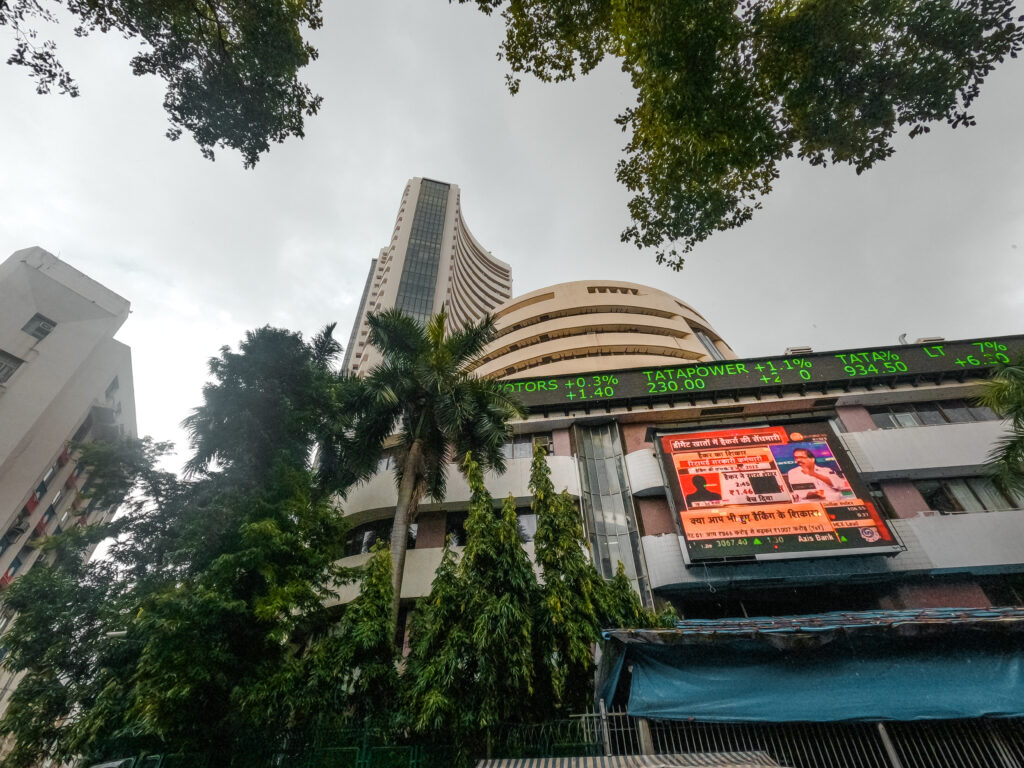
Mumbai is the financial capital of a nation of 1.4 billion people, a major manufacturing hub, home of the busiest Indian airport and the busiest Indian seaport. The city hosts such important financial institutions as the Bombay Stock Exchange, National Stock Exchange, the Reserve Bank of India and business giants such as the Tata Group, Aditya Birla Group, Reliance Industries. Mumbai’s historic landmark- the Bombay Stock Exchange (BSE) – the first and largest securities market in India, located on Dalal Street in Mumbai, to take you down memory lane. The BSE building has long been a defining feature of Mumbai’s busy business district, but it is also of great historic importance.
Photo: The BSE, Dalal Street; Credit: istock
Mumbai that hosts the iconic statues of charging bulls – the Big Bull, outside its headquarters, the iconic Pheroze J. Jeejeebhoy Towers on Dalal Street and ‘Zebu Bull’ at the Rajni Patel Chowk in the financial hub of Worli. Mumbai city hosts such important financial institutions as the Bombay Stock Exchange – the first and largest securities market in India. The bulls, representing the financial well-being of the market in the jargon of stock trading, celebrate the dynamism, ambition and the aspirations of the country’s financial capital and also exemplifies the bank’s determination and confidence in the future as a strong brand.
The country’s financial capital is also one of its biggest employment generators. Every professional’s dream is to work someday in his career. Mumbai city has the longest working hourd as compared to 77 major cities around the world. Practically every major multinational in the world has an office set-up in Mumbai. Being a city that has created a million achievers Mumbai continues to attract ambitious millennials and professionals from all walks of life, including media & entertainment.
2. The Big Port that Truly Made Mumbai the Gateway of India
Mumbai Port, the second-oldest major port of the country, has played an important role in the development of trade and commerce in the country. The port, which was designed to handle general cargo, has adapted to the changing times. It is now also capable of handling containerized cargo. The port handles about 8.61 percent of the sea-borne trade handled by major ports of the country. The strength of the Mumbai Port really is the fact that it caters to an entire range of cargo types like break bulk, project cargo, edible oil, coal, petroleum oil and lubricants (POL), chemicals, automobile cement and fertilizers. Mumbai city offers the perfect blend of the calmness of the sea and the fast pace of the ever-evolving world.
Photo: The Gateway of India; Credit: istock
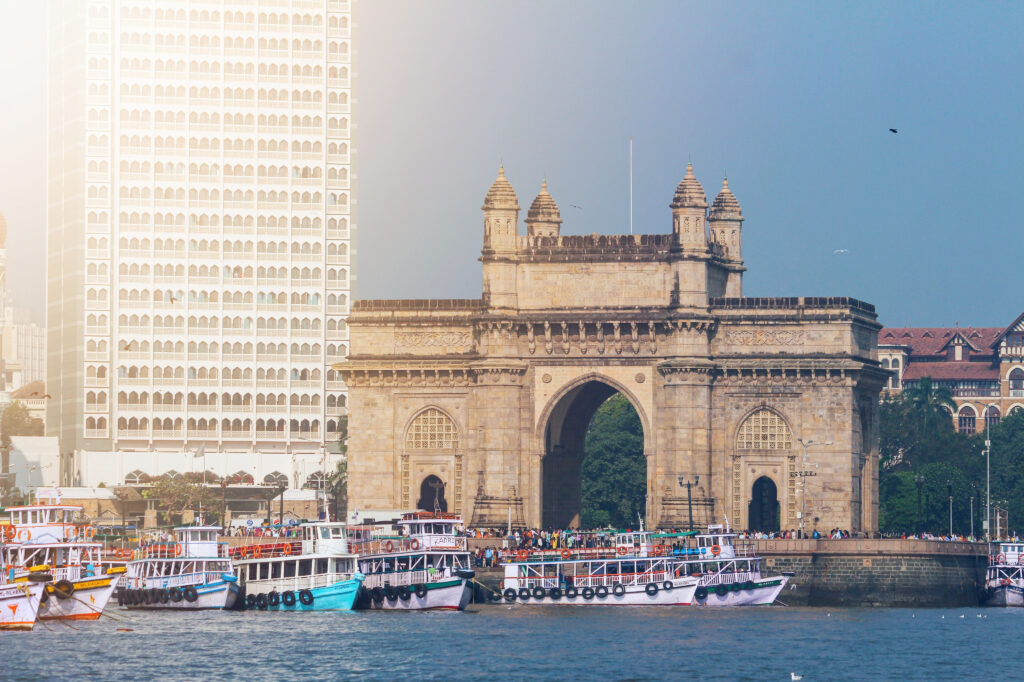
3. Architectural Wonders
Mumbai is known to have a rich architectural heritage with a lot of historical structures.
The Chhatrapati Shivaji Maharaj Terminus (CSMT), formerly known as Victoria Terminus Station, a UNESCO World Heritage Site and a historic terminal railway station located in the heart of Mumbai. Built in 1888, the station is a grand reminder of the British Raj in India and still one of the most historical landmarks within the Central Business District of Mumbai. It has seen the transition of Bombay to Mumbai. It is an outstanding example of Victorian Gothic Revival architecture in India, blended with themes deriving from Indian traditional architecture. It is an outstanding example of the meeting of two cultures, as British architects worked with Indian craftsmen to include Indian architectural tradition and idioms thus forging a new style unique to Bombay.
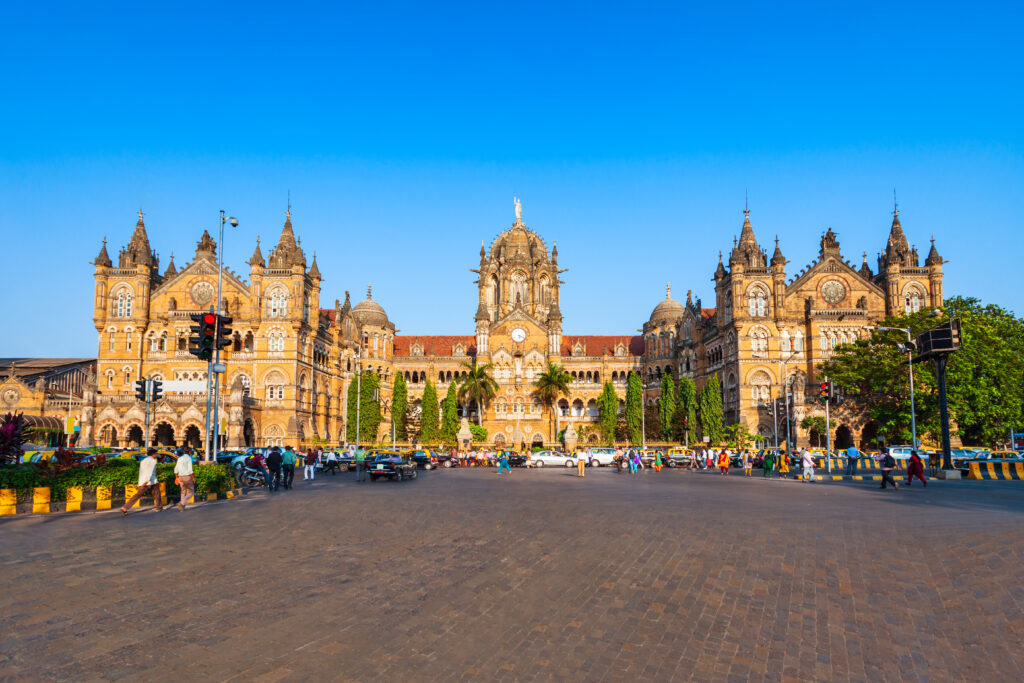
The Chhatrapati Shivaji Maharaj Terminus (CSMT), formerly known as Victoria Terminus Station, a UNESCO World Heritage Site and a historic terminal railway station located in the heart of Mumbai. Built in 1888, the station is a grand reminder of the British Raj in India and still one of the most historical landmarks within the Central Business District of Mumbai. It has seen the transition of Bombay to Mumbai. It is an outstanding example of Victorian Gothic Revival architecture in India, blended with themes deriving from Indian traditional architecture. It is an outstanding example of the meeting of two cultures, as British architects worked with Indian craftsmen to include Indian architectural tradition and idioms thus forging a new style unique to Bombay.
Photo: The CSMT; Credit: istock
Being the first cable-stayed bridge to have been created over the Arabian Sea, the Bandra–Worli Sea Link, officially called Rajiv Gandhi Sea Link, is a ubiquitous symbol of 21st century Mumbai is a symbol of aspiration and in Mumbai is an architectural marvel. The 5.6-kilometre cable-stayed bridge is a remarkable technical feat, the first of its kind built over open seas in India. India’s first eight-lane freeway of India. The cable-stayed sections of this bridge, the tall towers along which the cables take support and E-Toll service are the striking features of the Bridge.
The Gateway of India is an arch-monument built in the early 20th century in Mumbai, an iconic landmark and Mumbai’s top tourist attraction. It is located at the tip of Apollo Bunder, overlooking the Arabian Sea. Apollo Bunder was used as a jetty in earlier days and later renovated to literally act as the ‘gateway to India’. As the name signifies, this monument served as an entrance point to India for the British Viceroys. The structure, built to represent the grandeur of the British Empire in India, has stood testimony to almost a century of Mumbai’s developments. Since 2012, the Gateway of India has played host to the Elephanta Festival of music and dance.
4. City Holds Many Records
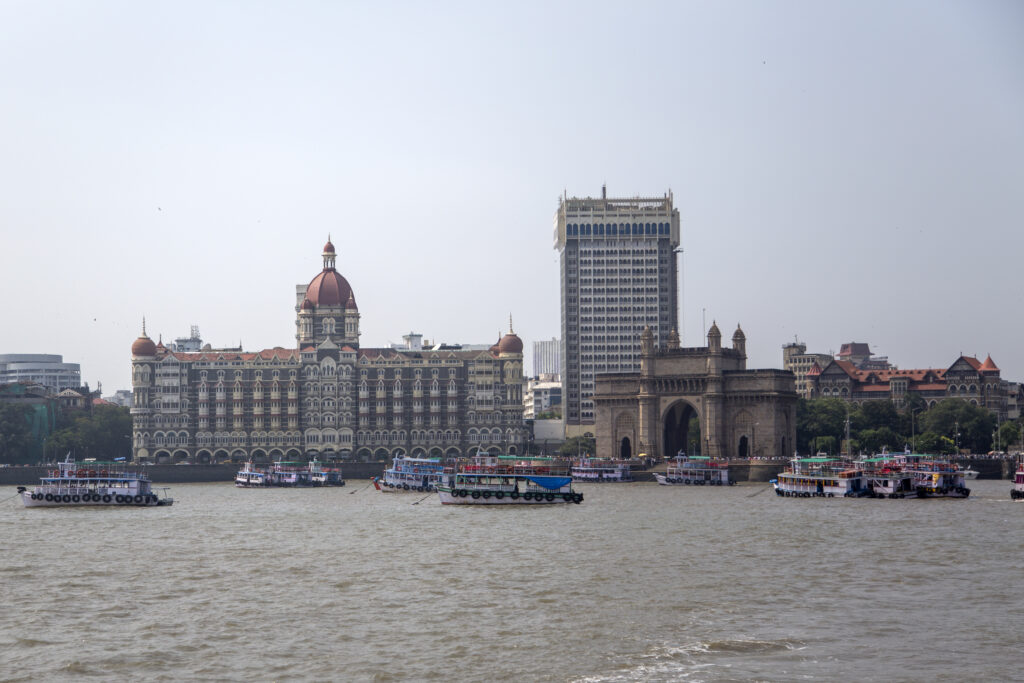
Mumbai holds many records, including that of hosting India’s first luxury hotel. Located in Colaba, Mumbai, the Taj Mahal hotel, or the Taj Palace hotel, first opened its doors to guests in 1903 and it was the country’s first ever harbour landmark. Over the last century or so, the hotel has played host to royalty, several dignitaries, and eminent personalities from all over the world. The foundation of the Taj was laid in 1898 by Jamsetji Tata, the founder of the Tata Group. Jamshedji Tata was inspired to build this hotel after he was refused entry at one of the grandest hotels of British time, Watson’s Hotel. During World War I, the hotel was converted into a military hospital with 600 beds.
Photo: The Taj Mahal Hotel; Credit: istock
The first passenger train on the Indian sub-continent ran from Bori Bunder in Mumbai to Thane in 1853. The very first airport in India was in Juhu, Mumbai. This airport was founded in 1928 as a civil aviation airport. In 1932, JRD Tata landed at the Juhu Aerodrome, inaugurating India’s first scheduled commercial mail service. Juhu airport has played an important part in India’s aviation history.
Photo: Juhu Airport; Credit: istock
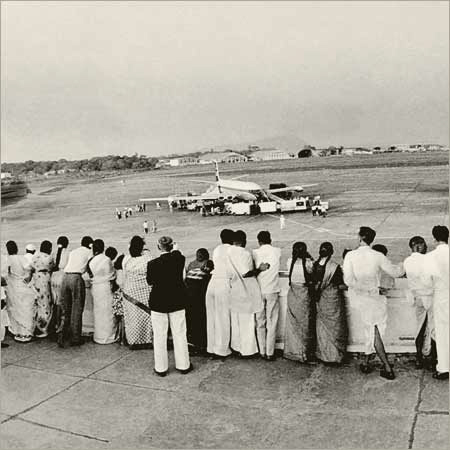
5. Art Centre & Entertainment Capital of the Country

Being a city that has created a million achievers Mumbai continues to attract ambitious millennials and professionals from all walks of life, including media & entertainment. As an art center, Mumbai hosts the Bollywood industry as well as the Marathi cinema industry. The Mumbai Film City or Dadasaheb Phalke Chitranagari at Goregaon in Mumbai, established in 1977 – one of the largest studio complexes in India. It has virtually every facility that a filmmaker needs, which makes it the ultimate destination for every discerning producer. Mumbai also hosts the Kala Ghoda Arts Festival -one of the country’s longest-running and most prominent neighborhood festivals. It is held annually every February in and around the heritage precinct of Kala Ghoda in south Mumbai. The Kala Ghoda Association organizes the event, with a vision to spread awareness of the arts, especially among those with limited access and exposure to culture. The nine-day festival, launched in 1999, draws lakhs of visitors from across Mumbai and beyond. Kala Ghoda Festival is the most prominent congregation of art lovers in Mumbai. This is also a unique effort to preserve the colonial architectural heritage of the area.
Photo: The Kalaghoda Festival; Credit: istock
6. Rich History & Heritage of An Ancient Trade Centre
Archaeologists have found stone tools dating back to the Middle Stone Age in north Mumbai, indicating human habitation in the area 10,000 to 15,000 years ago. The original seven islands that became present-day Mumbai were part of maritime trade networks with Egypt and Persia around 1000 BC and had been part of the Magadha Empire ruled by Ashoka in the 3rd century BCE. The city was ruled in the 6th–8th century by the Chalukyas. The city has the honour to be home to more rock-cut caves than any other urban region in the world. These caves and archeological remains are the sole testimonies to its rich cultural past. Kanheri Caves – a group of 118 monolithic Buddhist caves that date back to the 1st century BC and Elephannta Caves – a group of 17 caves constructed about the mid-5th to 6th centuries AD are treasure houses of history of the city. Ancient caves like Elephanta, Kanheri, Mahakali, Jogeshwari and Mandapeshwar caves are all connected by a trade route that existed in and around Mumbai nearly 2,000 years ago.
Photo: The Elephanta Caves; Credit: istock

Mumbai City Souvenirs
We at Indic Inspirations have attempted a brilliant idea to bring you the beauty of Mumbai in your living room by designing souvenir items for anyone in love with Mumbai. These gift articles can be bought for you or for someone you know, who is a ‘true Mumbaikar’. Our different Mumbai souvenirs are listed above to make your selection easy. The collection of souvenirs reminds you of the beautiful elements of the city. We have created a number of memorabilia for guests and visitors to the city as well as its residents as a memory of this great city. Scale Models, Jigsaw Puzzles, Cups, Mugs, Caps, Board Games and many more narrating the story of the history, geography and prominent features of the city. Check out the collection page HERE.
Sources
- Tools near Mumbai beach trace human settlements to Middle Stone Age | Mumbai news – Hindustan Times
- Reasons Mumbai is Known as ‘The City Of Dreams’ (theculturetrip.com)
- Mumbai – History | Britannica
- Explore The Ancient Caves Of Mumbai – Outlook Traveller (outlookindia.com)
- Elephanta Caves – UNESCO World Heritage Centre
- Caves tell a tale of an ancient trade route (dnaindia.com)


